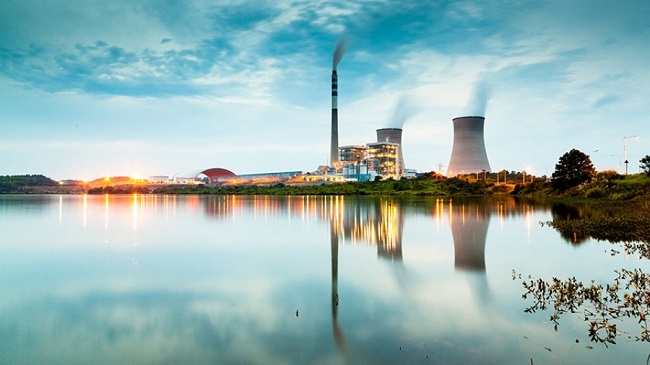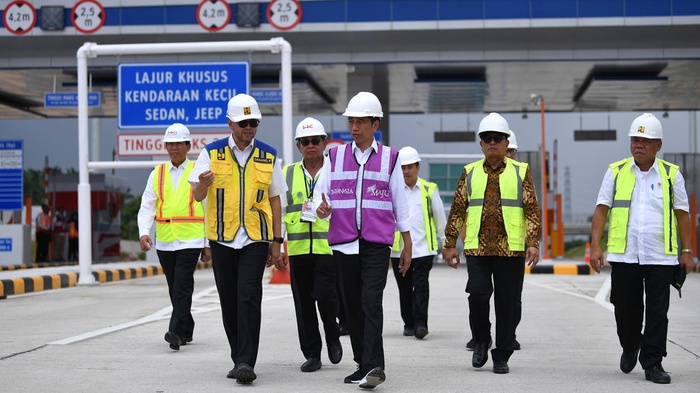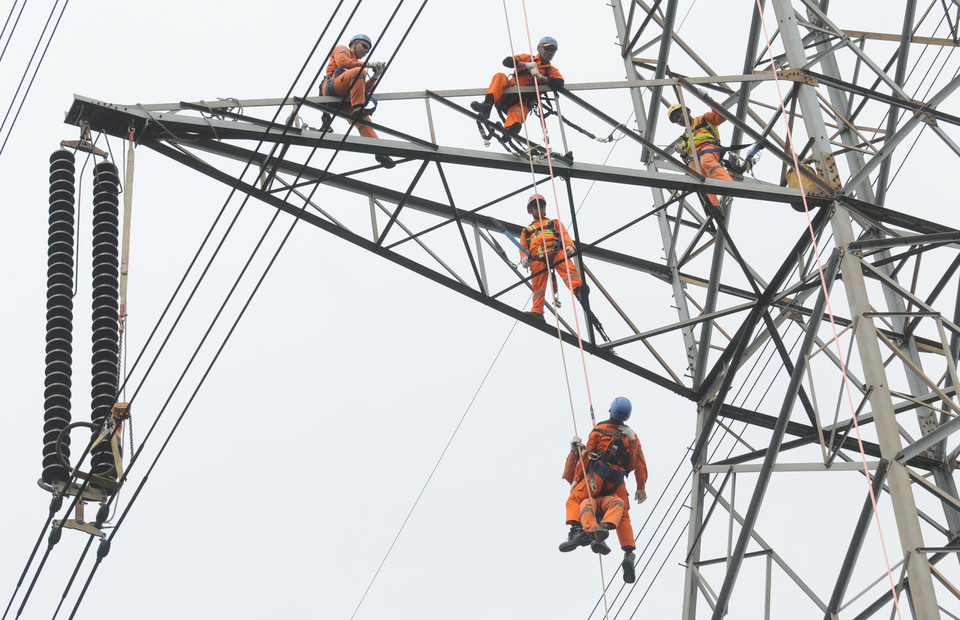The government’s approach to this mega power infrastructure program is typical of its overwhelming drive to get business done
The government’s approach to this mega power infrastructure program is typical of its overwhelming drive to get business done
James Guild
Shortly after he took office in 2014, President Jokowi announced that his administration would add 35,000 MW of new generating capacity to Indonesia’s electric grid by the end of his first term in 2019. Based on rosy projections of 7 per cent annual GDP growth, it was assumed the country would need to ramp up power plant construction considerably to keep pace with ballooning demand. At the time, some openly scoffed at the idea.
In the end, that 7 per cent growth did not materialise, and the state-owned electric utility Perusahaan Listrik Negara (PLN) scrapped some 22,000 MW of anticipated capacity increases from its 10 Year Plan in 2018. Jokowi’s grand vision for building 35,000 MW of new capacity in four years spearheaded mainly by Public-Private Partnerships that would induce billions of dollars in foreign investment did not work out quite as planned. But the story of the 35,000 MW program – both its successes and its failures – illuminates important aspects of how infrastructure development has been carried out in the Jokowi era.
For one, while it’s easy to disparage the fact that the program missed its wildly ambitious target, Jokowi actually did succeed in speeding up the pace of new power plant construction considerably, resulting in billions of dollars of foreign investment and thousands of MW of new generating capacity. The other interesting thing is how he approached the program – mainly by tapping the power of the central state to leverage an array of financial, legal and administrative tools in order to break through impasses and accelerate project development.
This is important because the way the 35,000 MW program was executed provides key insights into the recentralisation of state power under Jokowi, highlighting why he prefers this approach to development as well as some of its downsides. Given the pushback and controversy over the Omnibus Bill on job creation, which seeks to codify much of this recentralisation into binding law, tracing some of the pathways that led to this point provides useful context.
A history of power
The 35,000 MW program is the fourth major electricity construction program Indonesia has undertaken in the last three decades. The first took place in the 1990s during the final years of the New Order, when President Suharto opened Indonesia’s electricity generation market to private competition for the first time. Prior to that PLN maintained a complete monopoly on the generation, transmission and distribution of electricity in the country.
The experimentation in privatisation did not end well. As detailed in Making Foreign Investment Safe, PLN signed contracts with 27 independent power producers (IPPs) during the 1990s. The private developers, almost all of them foreign, agreed to shoulder the initial costs of building new power plants and PLN agreed to off-take their power at a set price for 20-30 years. The key point here is that PLN was obligated to pay the IPPs in dollars, while it collected revenue in rupiah, creating a critical mismatch in its foreign exchange exposure should the rupiah lose a lot of value very quickly – as it did during the Asian Financial Crisis.
The rapid depreciation of the rupiah in the late 90s plunged PLN into a solvency crisis and many of these power projects were cancelled or belatedly finished after much legal wrangling. In the end, it probably would have been cheaper and easier if PLN had simply built the power plants itself. In 2006, with economic growth rebounding, PLN and the Ministry of Energy set out to do just that with the Fast Track I Program. The goal of Fast Track I was to add 10,000 MW of coal-fired generating capacity by 2010, and PLN would build and operate the plants itself with private developers entirely side-lined.

The program had reached around 73 per cent of its target by 2014, which hints at the chronic tendency of the government to over-promise and under-deliver. But in fact, Fast Track I did accomplish its main goal, albeit at a slower pace than expected – PLN steadily added new capacity during a time when foreign developers viewed the post-crisis investment environment in Indonesia with scepticism.
As Fast Track I lumbered on a second phase called Fast Track II was rolled out in 2010. This time the goal was 17,918 MW of new capacity, two thirds of which would be built by the private sector. The time was right, apparently, for Indonesia to welcome IPPs back into the electricity generation market. But Fast Track II was a larger and more complicated affair, seeking to develop a variety of different energy sources and dividing up the electricity market between PLN and private developers, but without clarifying some key regulatory and policy issues. It struggled out of the gate.
All of this turns the spotlight on a fundamental irony in the structure of Indonesia’s electricity market. PLN is the only off-taker in the country. Yet the utility also builds and operates its own power plants. This creates a situation where PLN is tasked with buying electricity from private companies with which it is also competing for market share. Can it really be an honest broker in such situations?
This is what ultimately drives pro-market reforms aimed at unbundling vertically integrated monopolies. When PLN is both the only off-taker and the largest producer of electricity, it creates deeply entrenched conflicts of interest and all but ensures the electricity market, such as it is, will be dysfunctional. Coupled with Indonesia’s miles of red tape, PLN’s own internal financial woes and the difficult process of acquiring land it may seem like somewhat of a minor miracle that power plants ever get built.
The fate of the 35,000 MW
This was the scene when Jokowi announced his 35,000 MW power plan. A utility that has long depended on injections of state capital and with a poor track record of successfully closing deals with private developers was being tasked with building 35,000 MW of new capacity, mainly by signing deals with private developers. Lacking a clear legal right of eminent domain, acquiring the land for power plants could drag on for years, and financing for these projects is generally not released until most of the land and necessary permits have been acquired. The investor interest was there, but only if there was some reasonable certainty those obstacles could be overcome.
By 2018, many of these concerns had apparently been ameliorated. Looking at only the largest mega-projects of 1,000 MW or greater, by 2018 there were seven that had reached financial closing and were under construction (six in Java, one in Sumatra). These projects, all of which are IPPs, had an approximate value in 2018 of $17 billion and will add 11,000 MW of new capacity over the next few years as they come online. Six are coal-fired and one (Jawa-1) runs on liquefied natural gas. They are summarised in the table below.
|
Project |
Cost (USD) |
Capacity (MW) |
Lender |
|
Batang PLTU (Central Java Power Plant) |
4,200,000,000 |
2,000 |
JBIC |
|
Cirebon II |
2,100,000,000 |
1,000 |
JBIC |
|
Cilacap #4 (Jawa 8) |
1,389,000,000 |
1,000 |
CDB |
|
Tanjung Jati B 5 & 6 (Jawa-4) |
4,194,000,000 |
2,000 |
JBIC |
|
PLTU Jawa 7 |
1,800,000,000 |
2,000 |
CDB |
|
Jawa 1 |
1,800,000,000 |
1,760 |
JBIC |
|
Sumsel 8 |
1,680,000,000 |
1,240 |
CHEXIM |
|
Total Financial Closing |
17,163,000,000 |
11,000 |
Source: Compiled by author. JBIC (Japan Bank for International Cooperation); CDB (China Development Bank); CHEXIM (China Exim Bank)
Chinese-backed projects in particular have moved very quickly, but all of these projects once they were targeted for accelerated development moved rapidly toward financial closing, often times with the government leveraging new regulatory or legal powers to speed them up. In the case of the Batang PLTU (Central Java Power Plant), the project had been stalled since 2011. The main obstacle was land acquisition as most people understandably do not want to live near a coal-fired power plant. In 2015, PLN invoked the legal authority of Law No 2 of 2012 on Land Acquisition, a landmark piece of legislation which provides clear statutory authority for the state to acquire land in the public interest. This greatly sped up the pace of land acquisition.
In tandem, the government revised Presidential Regulation 71 of 2012, which created a new administrative authority allowing the developer to start construction even if land acquisition was not 100 per cent complete. As the remainder of the disputed land worked through the legal system the project was allowed to break ground in the meantime. The Ministry of Finance and PT Indonesia Infrastructure Guarantee Fund (IIGF) also signed on as guarantors of the project, and shortly thereafter it reached financial closing and construction began in 2016.
The Cirebon II power plant also faced legal difficulties in 2016 in the form of a lawsuit alleging it did not comply with the relevant spatial plan. In 2017 the Bandung State Administrative Court ruled in favour of the plaintiffs. The developer applied for another permit, this time invoking a new government regulation which exempts Nationally Strategic Projects (which Cirebon II is considered to be) from complying with spatial plans. A second lawsuit was brought and rejected, citing the project’s exempt status and paving the way for it to move forward.

There are numerous similar examples of the state using its authority to speed up land acquisition, extend financial guarantees and circumvent legal and bureaucratic obstacles as it carried out the 35,000 MW program. And while it has fallen short of its grand ambitions, the seven projects summarised above will add more capacity to the grid than the entire Fast Track I program in a shorter period of time. The plan also successfully involved the private sector on a larger scale than previous efforts, drawing billions in foreign investment which has been a major priority for the Jokowi administration.
The 35,000 MW program had to grapple with the realities of negotiating complex, multi-billion dollar power deals involving multiple stakeholders with divergent interests while navigating an unreliable regulatory and legal environment. For Jokowi, the most expedient route was recentralising power in Jakarta and pushing through burdensome legal and regulatory requirements by simply bypassing them. Much of this stems from his vision for economic development in general, in which the private sector, foreign investment, infrastructure and industry are meant to play a big role. In this view, if the state did not take these steps the investment would not materialise, and investment is better than gridlock. From there you can trace a pretty clear through-line to the logic underpinning the Omnibus bill.
Leveraging the power of the state to build power plants quickly has inflamed social tensions and given the impression of a monolithic state that is bulldozing the interests and voices of ordinary people, using loopholes to gain the upper hand on impacted landowners and local communities. That the state flexed its power to expedite the construction mainly of coal-fired power plants that often benefit fossil fuel companies with political connections, rather than investing in more sustainable options like renewable energy, does little to assuage this view.
In the end Jokowi built less power than he promised, but more than many probably expected. He sped up projects in a way that is characteristic of his government’s approach to economic development, using the power of the state to break through bottlenecks and in the process fuelling some of the grassroots opposition we saw against the Omnibus bill in October. And the truly ironic thing about this is that the speed with which the administration moved may not even have been necessary. With slower economic growth and electricity consumption than expected PLN may even be looking at a power surplus, no doubt leaving some to wonder what the point of it all was.
James Guild is an Adjunct Research Fellow at the S. Rajaratnam School of International Studies. He has a PhD in International Political Economy and writes for the Pacific Money blog at The Diplomat, covering finance, trade and economic development in Southeast Asia. Follow him on Twitter @jamesjguild or www.jamesjguild.com
